#Women in Buddhism
Explore tagged Tumblr posts
Text

New Buddhist books I picked up from McKay's - my favorite bookstore. As a Baby Buddhist, I am always looking for interesting books to add to my collection (seen below). I always keep an eye out for Women in Buddhism books. Found two this time!

Thich Nhat Hanh is a favorite as is Jan Chozen Bays. Any recs for me? I tend toward Zen, but I am open to learning about other Buddhist schools.
4 notes
·
View notes
Text
A Critical Analysis of Buddhism
About two and a half thousand years ago, a Hindu prince named Siddhartha Gautama [AKA–Buddha Shakyamuni, 589 BC, the founder of Buddhism] was born in the north of India, leading a happy and indulgent childhood, protected from the harsh realities of life. At age 29, he walked out of his comfort zone and witnessed the harsh realities of life. Moved by all the suffering he saw, he vowed to search…
View On WordPress
#Abhidharma#Atheism#Atma-soul#Buddhism#Chan Buddhism#China bashing#Common sense#Connectivity#Contradictions#Dalai Lama#Dharma#Experiences#Faith#Free will#karma#logic#Mahayana Buddhism#Naturalism#Nature#Nirvana#Reincarnation#religion#Samsara#Sutras#Taoism#Theravada Buddhism#Vedanta#West in love?#Wheel o life#women in Buddhism
3 notes
·
View notes
Text
Empowering Women: The Impact of Their Contribution in Buddhism
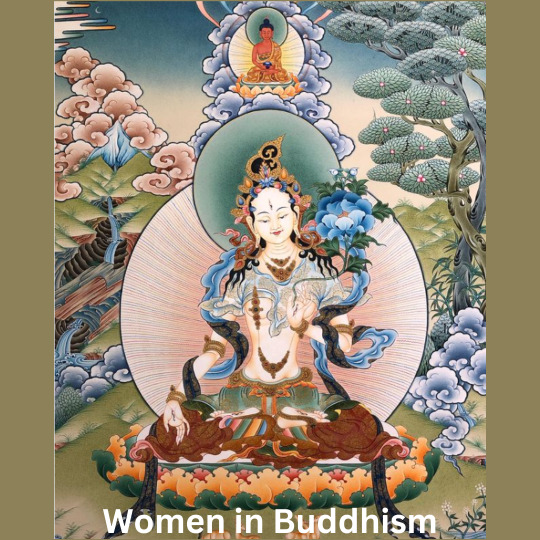
Interest in the role of women in Buddhism is experiencing a renaissance. And while there may be frustration, grief, and rage about historical gender inequity in Buddhism, we can use Buddhist methodologies to transform these challenging emotions into greater compassion and wisdom.
Learn about the empowering journey of women in Buddhism and their valuable contributions - as told through the personal experiences of Catherine Pawasarat Sensei.
Know More about Women and Buddhism:- https://www.planetdharma.com/insights-for-women-in-buddhism/
#Women in Buddhism#Historical Gender Inequity#women buddhism#Women and Buddhism#Empowering Women#Women's Contribution to Buddhism
0 notes
Text
Mahaprajapati Gotami - The Step Mother of Lord Buddha
Did you know that Lord Buddha had a stepmother named Mahaprajapati Gotami who became the first Buddhist Nun and played an important role in the spread of Buddhism. She received initiation from The Blessed One Himself and was also His maternal aunt (mother's sister).
The Blessed One's name "Gautam" as in Gautam Buddha or Siddhartha Gautama, also comes from Mahaprajapati Gotami's name.

0 notes
Text

Irene Chou (Zhou Lüyun, 1924-2011)— Sunset in Autumn [ink, colours, on rice paper, hanging scroll, ca. 1989]
386 notes
·
View notes
Text

#jorja smith#drake#j. cole#jhene aiko#kendrick lamar#caribbean women#jamaican women#green smoothie#vegan#buddhism#music
353 notes
·
View notes
Text

Central to the nuns’ identity is their proficiency in martial arts. Jigme Rupa (all nuns’ names are prefixed with Jigme) uses a sword to practise her skills outside the main temple. Among the eight ‘mystical’ weapons that can be used in martial arts, Rupa says her favourite is a sword.
Photograph by Skanda Gautam
411 notes
·
View notes
Text

Kōmyō (701-760), born Asukabehime, was Empress Consort of Japan. A highly influential figure, she played a key role in the spread of Buddhism and undertook numerous philanthropic projects.
The Empress Consort
Kōmyō was the daughter of the powerful courtier Fujiwara no Fuhito. In 716, she married the future Emperor Shōmu, who would later succeed his aunt, Empress Regnant Genshō.
Kōmyō was not only a skilled calligrapher but also a devout Buddhist. Both her father and grandfather were instrumental in making Buddhism the religion of the Fujiwara clan. Her mother, Tachibana no Michiyo, also took religious vows.
In 718, Kōmyō gave birth to a daughter, Princess Abe (718-770), who would later reign as Empress Kōken/Shōtoku. In 727, she had a son, but he died shortly after birth. The Fujiwara family used this loss to accuse their political rival, Prince Nagaya, of having used black magic to curse the child. This led to Nagaya's suicide.
In 729, Kōmyō was elevated to the title of Empress Consort, or kōgō, securing her position as Shōmu’s principal wife and ensuring her daughter’s place as first in line for the throne.
By 738, Abe was officially named Crown Princess—the only instance in Japanese history of a woman receiving this title. Kōmyō likely played a significant role in securing this appointment, using Buddhist teachings to bolster Abe’s legitimacy.
Kōmyō had her own Palace Agency, with a staff as large as those of other major government offices, allowing her to use these resources in support of her causes.

Empress Kōmyō's calligraphy and signature
Protector and patron
Kōmyō was likely a key figure in the establishment of Nara’s Todai-ji temple. She established with her husband a network of government-sponsored temples for monks and nuns. Her household employed craftsmen to build temples, sculpt religious images, and scribes to copy sacred texts. Among these texts was the Lotus Sutra, a scripture highly valued by women, as it could be interpreted to suggest that women too could achieve enlightenment.
Kōmyō also cared for orphans, lepers, the poor, and those affected by war. She established a hospital that provided free medicine to those who couldn't afford it.
She transformed her father’s residence into a convent for nuns, known as Hokke-ji. She encouraged the women there to practice ikebana, or flower arranging, and the Hokke-ji Goryū school of Ikebana still exists today.
After her husband's abdication in 749, Kōmyō took the tonsure and became a nun, witnessing her daughter ascend the throne. She passed away in 760.
Kōmyō became a popular subject in art, with many legends surrounding her. In one famous tale, she washes a leper, who is later revealed to be the Buddha himself. She has since been venerated as an embodiment of Kannon, the Bodhisattva of compassion. Today, the nuns of Hokke-ji continue her legacy by creating Braille texts for the blind and making amulets for pregnant women.
Feel free to check out my Ko-Fi. I'm about to launch my own business so your support would be much appreciated in these trying times!
Further reading:
Ambros Barbara, Women in Japanese religions
Lowe Bryan, Ritualized Writing: Buddhist Practice and Scriptural Cultures in Ancient Japan
Kane Robinson Arai Paula, Women Living Zen Japanese Soto Buddhist Nuns
Ooms Herman, Imperial Politics and Symbolics in Ancient Japan The Tenmu Dynasty
Schireson Grace, Zen Women Beyond Tea Ladies, Iron Maidens, and Macho Masters
#Empress Kōmyō#history#women in history#historyedit#women's history#japan#japanese history#nara#8th century#queens#buddhism#empresses#asian history
69 notes
·
View notes
Text
the pathologic Kin is largely fictionalized with a created language that takes from multiple sources to be its own, a cosmogony & spirituality that does not correlate to the faiths (mostly Tengrist & Buddhist) practiced by the peoples it takes inspirations from, has customs, mores and roles invented for the purposes of the game, and even just a style of dress that does not resemble any of these peoples', but it is fascinating looking into specifically to me the sigils and see where they come from... watch this:
P2 Layers glyphs take from the mongolian script:



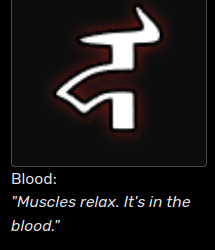



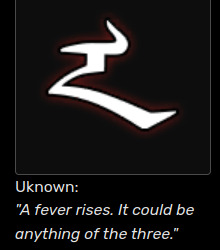
while the in-game words for Blood, Bones and Nerves are mongolian directly, it is interesting to note that their glyphs do not have a phonetic affiliation to the words (ex. the "Yas" layer of Bones having for glyph the equivalent of the letter F, the "Medrel" layer of Nerves having a glyph the equivalent of the letter È,...)
the leatherworks on the Kayura models', with their uses of angles and extending lines, remind me of the Phags Pa Script (used for Tibetan, Mongolian, Chineses, Uyghur language, and others)


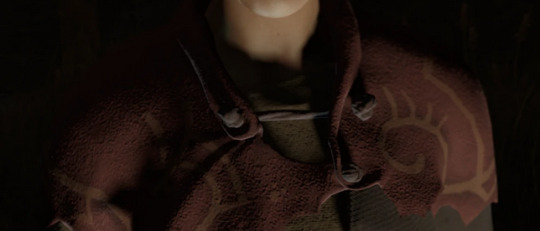
some of the sigils also look either in part or fully inspired by Phags Pa script letters...




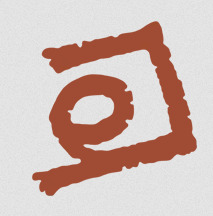

some look closer to the mongolian or vagindra (buryat) script

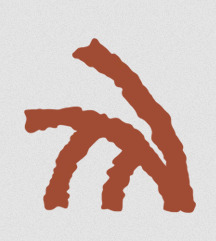



looking at the Herb Brides & their concept art, we can see bodypainting that looks like vertical buryat or mongolian script (oh hi (crossed out: Mark) Phags Pa script):





shaped and reshaped...
#not sure how much. what's the word. bond? involvement? not experience. closeness? anyone in the team has with any of these cultures#but i recall learning lead writer is indigenous in some way & heavily self-inserts as artemy [like. That's His Face used for#the p1 burakh portrait] so i imagine There Is some knowledge; if not first-hand at least in some other way#& i'm not in the team so i don't know how much Whatever is put into Anything#[ + i've ranted about the treatment of the brides Enough. enough i have]#so i don't have any ground to stand on wrt how i would feel about how these cultures are handled to make the Kin somewhat-hodgepodge.#there is recognizing it is Obviously inspired by real-life cultures [with the words;the alphabet;i look at Kayura i know what i see]#& recognizing it Also is. obviously and greatly imagined. not that weird for you know. a story.#like there is No Turkic/Altaic/Mongolic culture that has a caste of all-women spiritual dancers who place a great importance on nudity#as a reflection of the perfect world and do nothing but dance to bring about the harvest. ykwim...#like neither the Mongols nor the Buryats nor the Tibetans dress the way the Kin does. that's cos the Kin is invented. but they're invented.#.. on wide fundations. ykwim......#Tengrism has a Sky Deity (Tengri) with an earth-goddess *daughter* whereas the kin worship an Earth-Goddess mother of everything#+ a huge bull. Buddhism has its own complete cosmogony & beliefs which from the little I know Vastly Differ from anything the Kin believes#like. yeah. story. but also. [holds myself back from renting about the Brides again] shhh...#neigh (blabbers)#pathologic#pathologic 2
305 notes
·
View notes
Text

Byakuren sketch
Been listening to her theme all day vvv
#artists on tumblr#touhou#buddhism#touhou project#unidentified fantastic object#UFO touhou#byakuren hijiri#i fucking love video game women#Byakuren#anime art#sketch#art wip#work in progress#sillyposting#Spotify
43 notes
·
View notes
Text
A young man approached Buddha, seeking relief from his sorrows
After much discussion Buddha offered him a potion
Buddha explained "drink this and you will turn into a woman"
The young man drank the potion, and was disappointed when nothing happened
"This is just water!" He cried, "it did not work!"
Buddha calmly answered, "it was indeed just water. But it did work."
The young woman was stunned.
70 notes
·
View notes
Text
i hate an "its not that deep" bitch. sorry for believing that artists put thought and effort into their works i guess
#what makes it worse is that this post is about#land of the lustrous#houseki no kuni#as in#the manga series widely known for being difficult to fully comprehend without extensive knowledge of buddhism#and yet this guy in my manga club is convinced that the buddhist imagery is entirely for aesthetic purposes#like bitch ??????#he always brings up nge and the christian imagery in that but lets be honest#nge is an exception NOT the rule#if i dont agree with your interpretation of something thats fine because at least youre thinking#but pulling an its not that deep just feels like refusing to engage with the work#ive also had people pull its not that deep on me when calling out the sexism in certain anime#like okay maybe the creator doesnt actually hate all women but that doesnt mean they dont have unconscious biases
15 notes
·
View notes
Text





Lasha Mutual, Dakini with Blessings for the Ocean, 2019, digital painting
Dakini with Ocean Waves, 2019, digital painting by artist (2,3)
digital image manipulation by me (4,5)
#lasha mutual#women artists#dakini#buddhism#buddhist art#digital art#digital painting#digital image manipulation
12 notes
·
View notes
Text

Idk why it's taking so long (probs cause very been taking so many breaks to watch documentaries about the Flds) but this is what I have so far
My friend called him a dorito
#jttw#journey to the west#sun wukong#monkey king#Wukong#Girlypop doesn't have any legs but he still slays#Not really#I tried tho#Currently obsessed with the Lds Church (idk how we got to Buddhism to here but ok) nd the Flds was an unhappy accident I found along the wa#All of it was so prolific and horrible#I've seen people rag on the lds Church for being kinda culty (moreso historically) but the Flds is a cult#It transcended religion#Aside from a few beliefs I don't agree with (their stance on queer people and women mostly) the lsd Church is great#But Flds was terrible#The fact child labour is one of ther lesser crimes says a lot#Their treatment of children under Warren Jeffs is genuinely disgusting#And I'm so glad the man himself is in jail for the rest of his foul little life
12 notes
·
View notes
Text

Umi And Mazu (Gods Are Real) WIP
Mazu, and her human from my comic.
#mazu#matsu#goddesses#goddess#chinese goddess#chinese#chinese mythology#chinese myth#mythology#myth#taiwan#taiwanese#tribal peoples#tribes#paiwan#digital painting#dark fantasy art#dark fantasy#fantasy#fantasy art#digital art#comic art#illustration#gods#chinese dragon#chinese woman#taoism#buddhism#beautiful women#pretty women
8 notes
·
View notes
Text

Ewa Ciepielewska — Tenga Rinpoche (oil on canvas, 1989)
40 notes
·
View notes